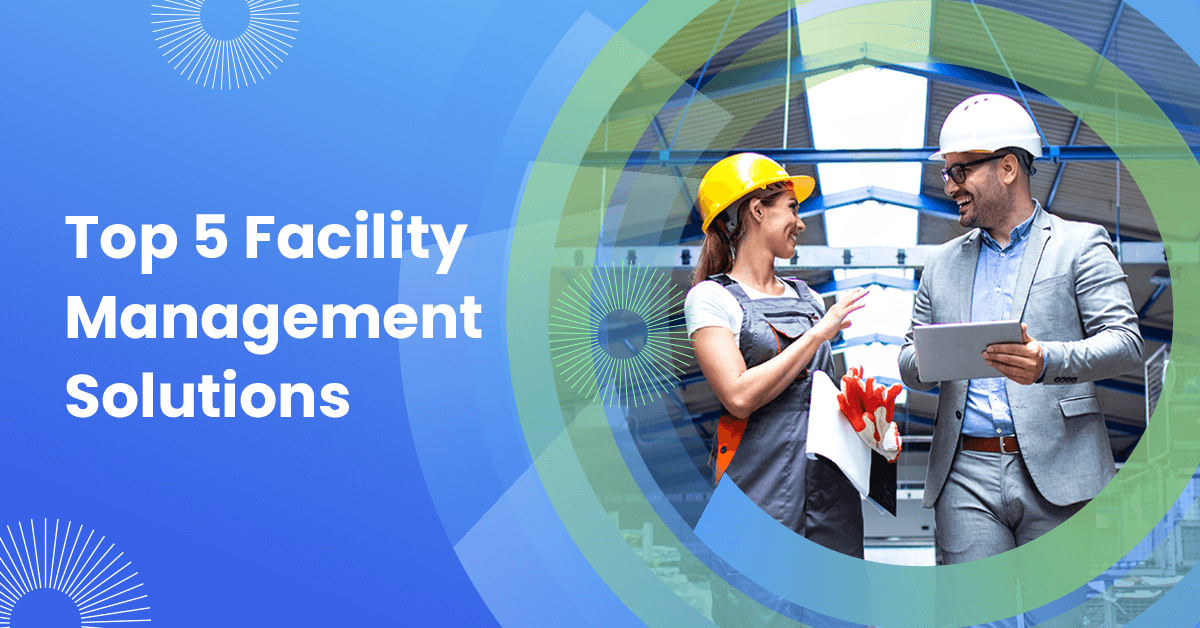Facility Management Trends That Are Forming the Future of Office Characteristics
Optimize Performance and Safety And Security: Ideal Practices in Facility Management
In today's quickly progressing landscape, taking full advantage of efficiency and safety and security in center management has become an essential focus for companies striving to enhance operational efficiency. By integrating smart technology, prioritizing upkeep protocols, and promoting a culture of security, center supervisors can considerably improve both performance and compliance. The challenge lies in effectively implementing these techniques while navigating the intricacies of modern offices. What specific strategies can be employed to make sure that these efforts not only exist side-by-side but additionally reinforce one an additional in a sustainable manner?
Embrace Smart Innovation

Executing wise sensing units and automation systems permits for precise monitoring of environmental problems, occupancy levels, and tools performance. This data-driven technique not just notifies decision-making however likewise supports predictive maintenance, lessening downtime and prolonging asset life. Smart modern technology boosts user experience by creating adaptive settings that react to the demands of residents.
Incorporating wise systems additionally advertises sustainability efforts, such as energy-efficient lighting and heating and cooling systems, adding to lowered carbon footprints. By embracing these developments, facility managers can guarantee that their operations continue to be competitive, resilient, and lined up with contemporary sustainability goals. Eventually, the shift in the direction of clever technology represents a transformative action in redefining center monitoring for a much more lasting and effective future.
Prioritize Routine Maintenance
Normal maintenance is essential for guaranteeing the durability and performance of center operations. A well-structured maintenance program not only expands the life of devices and facilities but additionally minimizes the possibility of unexpected failings that can disrupt procedures. By prioritizing normal maintenance, center managers can identify prospective issues early, permitting for timely treatments that reduce pricey repair services and downtime.
Developing a routine upkeep schedule is crucial. This must consist of routine inspections, maintenance, and needed repairs for all tools, heating and cooling systems, pipes, and electrical systems. Making use of a computerized upkeep monitoring system (CMMS) can improve this process, giving tracking and informs for upcoming upkeep tasks.
Additionally, fostering a culture of liability among team improves the performance of maintenance efforts. Educating employees to report and acknowledge upkeep issues can cause aggressive monitoring as opposed to reactive feedbacks. Additionally, documenting maintenance tasks makes certain compliance with security regulations and offers useful understandings for future preparation.
Implement Safety Training Programs
An extensive security training program is crucial for cultivating a protected functioning environment in any facility. Facility Management. Such programs furnish staff members with the expertise and abilities necessary to determine threats, apply safety protocols, and respond effectively in emergencies. By prioritizing safety training, organizations can dramatically reduce the threat of crashes and injuries, thereby improving overall productivity
To execute an effective safety training program, it is important to tailor the content to the more info particular needs of the facility and its operations. This consists of performing a thorough threat analysis to determine prospective risks distinct to the workplace. Training should include a variety of subjects such as appropriate equipment usage, emergency emptying treatments, and emergency treatment techniques.
Moreover, it is essential to engage staff members actively throughout training sessions. Making use of real-life scenarios and hands-on demos can improve understanding and retention of safety techniques. Routine correspondence course must likewise be set up to keep safety recognition at the leading edge.
Optimize Space Use
Efficient room use is a vital component of facility management that straight impacts functional efficiency and cost-effectiveness. Organizations usually battle with read more underutilized or overcrowded areas, leading to ineffectiveness and enhanced expenditures. To enhance room application, center managers must conduct more info routine assessments to identify just how spaces are presently being used and where enhancements can be made.
Implementing versatile work space designs, such as open workplace formats or modular furniture, can significantly improve flexibility to changing requirements. In addition, leveraging technology, such as area monitoring software, can offer valuable insights into tenancy patterns and aid identify underused areas.

Establish Clear Communication Channels
Enhancing area use usually discloses the need for robust communication strategies within a facility. Clear communication networks are important for promoting effective collaboration among personnel, maintenance teams, and management. By establishing these networks, center supervisors can make sure that details streams effortlessly relating to area usage, operational changes, and safety protocols.
Applying a multi-faceted interaction method-- integrating electronic systems, such as emails and team collaboration devices, with in person communications-- can substantially improve interaction and information dissemination. Routine conferences ought to be scheduled to discuss recurring tasks, address worries, and share updates. Furthermore, creating a central info hub, such as an intranet, permits staff members to access important records and statements easily.
Moreover, responses systems are important to gauge the performance of interaction methods. Motivating staff to share their understandings can cause improvements and cultivate a culture of openness. Educating programs concentrated on interaction abilities can additionally empower staff members to convey details clearly and effectively.
Inevitably, establishing clear interaction channels not just maximizes efficiency however also improves safety by making sure that everyone is notified and aligned with the facility's functional goals.

Conclusion
In verdict, the combination of wise modern technology, routine upkeep, extensive safety and security training, optimized room use, and effective communication networks collectively improves efficiency and security in center management. By leveraging IoT and AI for real-time tracking, companies can decrease operational costs while making sure conformity with safety guidelines. An aggressive method to upkeep and training cultivates a safer workplace setting, ultimately resulting in improved efficiency and business success. These best practices offer as crucial components for efficient center monitoring.
In today's swiftly advancing landscape, making the most of effectiveness and safety and security in facility monitoring has actually come to be a critical focus for organizations striving to enhance operational efficiency. By incorporating clever modern technology, focusing on upkeep methods, and cultivating a society of security, facility managers can considerably improve both productivity and conformity.To apply a reliable security training program, it is vital to customize the content to the particular needs of the facility and its procedures. By developing these networks, center managers can ensure that information moves flawlessly relating to area usage, functional adjustments, and security protocols.
In conclusion, the combination of wise technology, normal upkeep, extensive safety training, maximized area utilization, and reliable communication channels jointly enhances effectiveness and security in center administration. - Facility Management